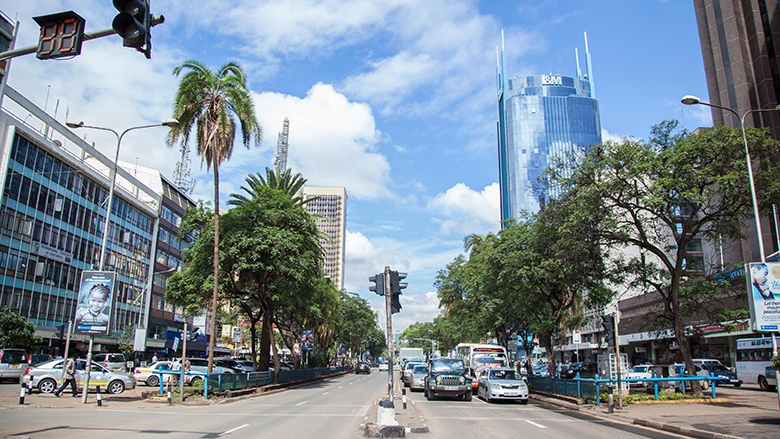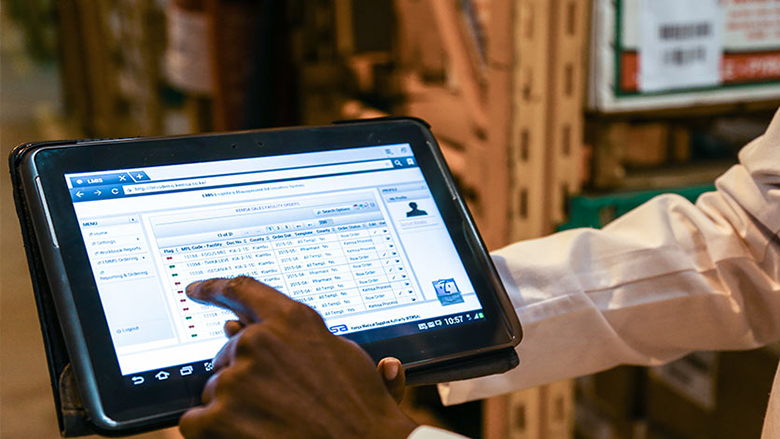Approach
The World Bank team designed a project around the objective to support the KNBS to generate better and more accessible data to inform policymakers and contribute to strengthening its capacity. That meant, for example, publishing key data on employment on a quarterly basis.
With the Kenya project, the World Bank made the first use of its new Program-for-Results financing instrument in the context of project supporting statistical capacity.
“With a Program-for-Results approach, Kenya uses its own institutions and processes to implement each part of the project and pays for it out of its Treasury,” said Johan Mistiaen, lead economist and program leader in the World Bank, who led the design and initial implementation phase of the Program. “Only after the government achieves specific program results does the World Bank disburse funds.” This helps build capacity within the country, enhances effectiveness and efficiency and leads to achievement of tangible, sustainable program results.
“We have created a lot of government ownership,” said the current project leader Utz Johann Pape, senior economist with the World Bank Poverty and Equity Global Practice. “With the new project design, we are now able to focus much more on technical – rather than administrative – processes. This also helps to create a deeper relationship with the government, and especially KNBS, to produce higher-quality results. It is working very smoothly in Kenya.”
The Program included funding and technical assistance for essential data production activities combined with improvements for the quality of data, for example by adhering to international standards while also contributing to an enhanced dissemination system including an online data archive, an advanced release calendar and compliance with international standards in terms of timeliness and frequency of dissemination.
Results
Since the project began, the statistics bureau has ramped up data collection efforts by implementing new surveys and increasing the frequency of traditional surveys. As part of the Program, the National Statistics Bureau implemented the Kenya Integrated Budget Household Survey, the Micro- and Small-Enterprise Survey, the Census of Establishments, the Integrated Survey of Services and a Survey of Industrial Production as well as the Kenya Continuous Household Survey. This helped to update key indicators of official statistics (GDP, labor, poverty) and also allowed for the rebasing of GDP, an essential statistical maintenance operation to anchor official statistics. The frequency of updated labor and poverty statistics are increased from every several years to quarterly (labor) and annually (poverty).
It also has improved the quality of data collection by complying with a more advanced set of quality standards and introducing a transparent peer-review process before the dissemination of results. The Program ensures compliance with the International Monetary Fund’s Data Quality Assessment Framework improving the reporting of comparable statistics. The peer-review process involves experts from local and international institutions to provide comments before the publication of reports, contributing to adherence with international quality standards.
© Sarah Farhat/The World Bank Finally, the project improved the dissemination system, for example, by launching and maintaining a National Data Archive, introducing an Advanced Release Calendar and complying with the Special Data Dissemination Standards, which provide guidelines for the quality, frequency and timeliness of data dissemination for a set of essential socio-economic indicators.
And even though the project is focused on results without monitoring procurement and fiduciary processes in detail, it has supported the implementation of an electronic financial management system and put in place identified anti-corruption measures helping to improve transparency and administrative efficiency as well as effectiveness.
World Bank Contribution
The Kenya Statistics Program-for-Results project is funded by $50 million from the World Bank’s International Development Association (IDA). Other partners include the International Monetary Fund and international as well as local partners.
Partners
The international development partners included African Development Bank, Food and Agriculture Organization, Deutsche Gesellschaft für Internationale Zusammenarbeit, Paris 21, Statistics Sweden, Statistics Norway, UKAID, The United Nations Children's Fund and World Food Programme. The local partners include the Ethic and Anti-Corruption Commission, the Kenya Institute of Public Research and the University of Nairobi.
Moving Forward
The project is slated to end in 2020, but the World Bank is looking for ways to sustain momentum and support more progress.

